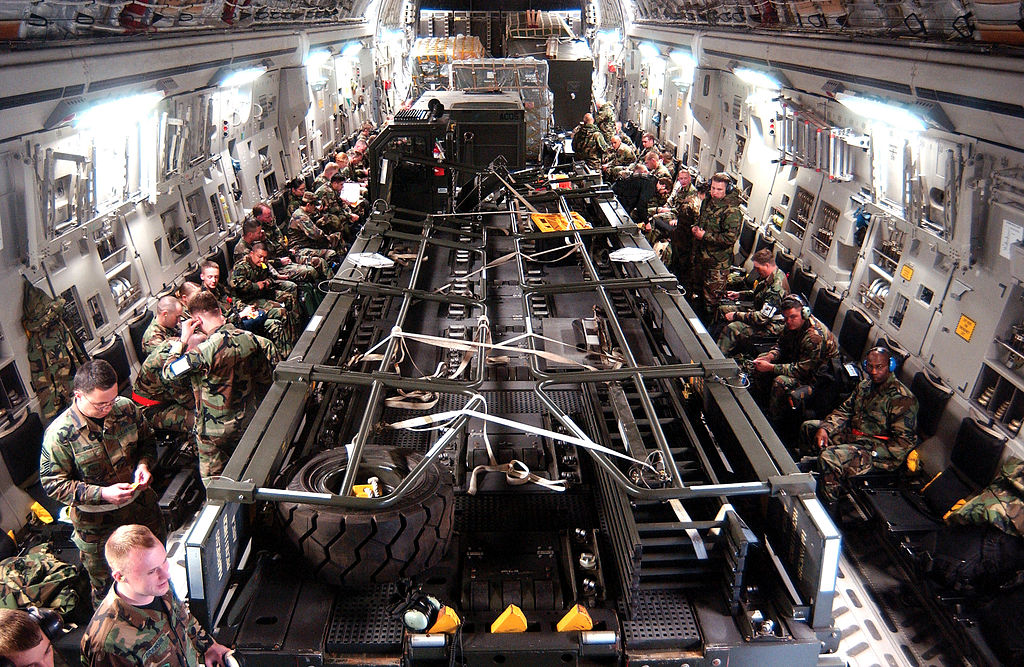Few military aircraft evoke as much awe and respect as the Boeing C-17 Globemaster III. This imposing and versatile aircraft has earned its place as a cornerstone in the arsenal of many national air forces. But what exactly is the C-17 used for, and why is it hailed as one of the most formidable military transport aircraft ever built?
The Boeing C-17 Globemaster III is a large, strategic airlift aircraft developed by McDonnell Douglas for the United States Air Force (USAF). It made its debut in 1993 and officially entered service in January 1995.
Designed to transport troops and cargo over long distances, the C-17 boasts an impressive maximum payload capacity of 170,900 pounds (77,519 kilograms). It can accommodate various combinations of personnel, equipment, and military vehicles, such as troops, ambulatory patients, medical attendants, tankers, and armored vehicles.

Its unique high-wing design, advanced avionics, and four powerful Pratt & Whitney PW2000 turbofan engines enable the C-17 to operate in diverse and challenging environments, including austere airfields. This versatility makes it suitable for both strategic and tactical airlift missions.
Boeing highlights the C-17’s exceptional cost-effectiveness and reliability, boasting the best-in-class combined dollar-per-flight hour and mission-capable rate. Additionally, the aircraft features impressive performance metrics, including a cruise speed of 450 knots (520 mph; 830 km/h), a range of 2,420 nautical miles (2,780 mi; 4,480 km) with a 157,000 lb (71,214 kg) payload, a service ceiling of 45,000 feet (14,000 m), and take-off and landing capabilities within relatively short distances.
One of the primary functions of the C-17 Globemaster III is strategic airlift operations involving the rapid deployment of troops, equipment, and supplies to distant theaters of operation.
Whether supporting combat missions or peacekeeping efforts, the C-17 plays a crucial role in delivering vital assets to where they are needed most. Its ability to transport oversized cargo, such as armored vehicles, ensures the swift and efficient movement of heavy equipment, bolstering military forces’ mobility and readiness.
Apart from its prowess in strategic airlift tasks, the C-17 Globemaster III shines in tactical airlift operations. This involves swiftly moving troops and supplies, aided by its advanced airdrop systems. With this gear, the C-17 can drop cargo and personnel directly to the front lines in remote spots, bypassing traditional landing zones.
This feature proves invaluable in hostile environments where standard landing operations might be impractical or risky. It grants military forces a strategic edge, allowing them to execute missions with precision and speed, even in challenging terrains.

Moreover, the C-17 is adept at aeromedical evacuation missions, offering vital medical aid to injured personnel in combat zones or disaster-stricken areas. When outfitted with specialized medical equipment and staff, it transforms into a flying hospital, ensuring the safe and swift transport of patients for critical care.
During crises, the C-17 acts as a lifeline, delivering emergency aid, relief personnel, and equipment to regions ravaged by natural disasters. Its capability to operate from unpaved airstrips enables it to reach remote and inaccessible areas swiftly, offering essential assistance to affected communities.
Whether ferrying supplies like food, water, shelter, or medical aid, the C-17 plays a pivotal role in lessening the impact of disasters and aiding affected populations in their recovery efforts.
In essence, the Boeing C-17 Globemaster III transcends its role as a mere military transport aircraft. It stands as a symbol of strength, adaptability, and versatility. From strategic airlift duties to tactical operations, aeromedical evacuations, and humanitarian missions, the C-17 consistently showcases its unmatched capabilities in meeting the varied demands of modern military and humanitarian endeavors.

